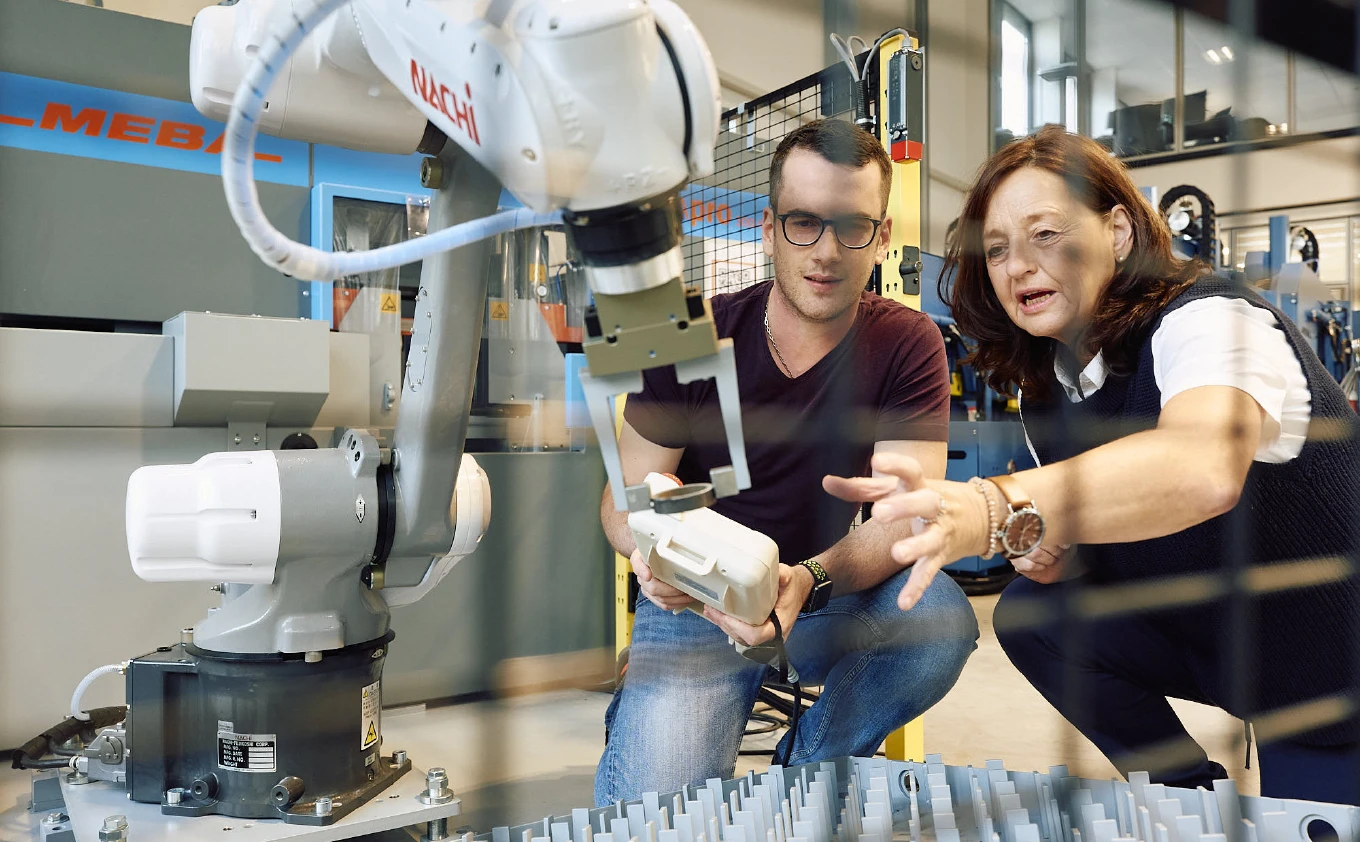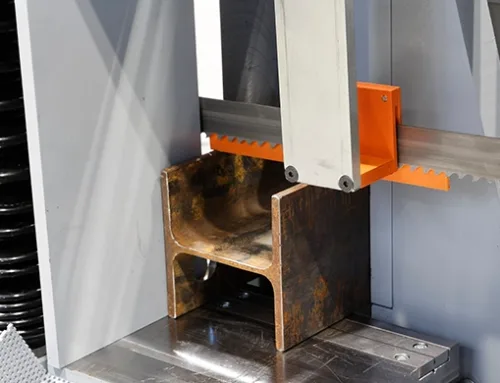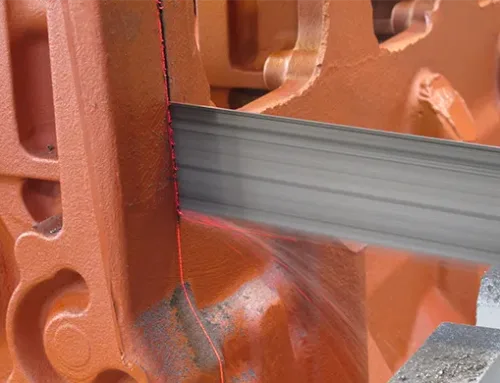“More flexible, more reliable, more productive: discover the benefits of robotic automation in steel and metal processing”
Introduction
You may have heard of robotic automation in steel and metal processing, but aren’t sure how it can help your business? In this blog post you will learn more about the advantages of manufacturing and automatic machining with robotic metalworking in combination with MEBA saws. We explain why robotic automation is a flexible, reliable and productive way to manufacture your steel and metal components.
Automation with robots is becoming increasingly popular in metalworking. Although it may initially seem more expensive than working manually, the right system can be an effective solution for companies with specific needs. From greater flexibility and faster production times to improved monitoring and quality control, the benefits of robot-assisted manufacturing speak for themselves.
A band saw machine with robot – is it worth it?
Even though the industry is currently undergoing a change and is relying much more on automation than it did a few years ago – robot solutions are still rarely used, especially in small and medium-sized metalworking companies. Often, the prevailing opinion is that connecting a machine with robots is something for the large-scale or vehicle industry. “It’s too expensive.” “It’s too complicated.” “You need large batch sizes.” – are some of the preconceptions.
In practice, these objections have since been refuted. The saw with tethered robot brings planning reliability due to its high availability. In other words, it can be utilized optimally and significantly more economically. In fact, the investment costs for robots usually pay for themselves within two years. The combination of MEBA bandsaw and robot is very easy to program and operate. The changeover is completed in a very short time, in less than 5 minutes, and creates maximum flexibility and a high level of cost-effectiveness, especially for small batches or in small operations.
How does robotic automation work?
In most metal cutting companies, especially small and medium-sized ones, the work around the metal saw is done by semi-skilled employees or skilled workers. This includes the standard task of “removing the workpiece and placing it”, the so-called “pick and place”. The respective part must be cleaned with high pressure before sawing so that it is clean and chip-free. Quality controls such as checking weight and surface, deburring and marking or labeling to monitor individual production steps are also part of the process.
These manually completed activities can take a long time and are prone to errors. Integrating a robot into the band saw and operating such a system via screens is simple. The six-axis robot from Nachi with a load capacity of 1 – 25 kg, a reach of 350 – 1882 mm and a repeatability of up to 0.02 mm can be customized within its parameters and optimally adapted to the requirements of your operation. Depending on the component, there are different grippers. The control is integrated into the saw control. By connecting the two specialists – Nachi robot and MEBA metal band saw – the systems communicate with each other – frictionless. The parameters of a new part are automatically transferred to the robot. The latter works through its tasks. This means that the robots can independently implement know-how geared to sawing applications.
What are the advantages of robotic automation?
Employee, robot and machine – a perfect combination
In today’s world, it is difficult for companies to find qualified employees and retain them in the long term. The search for skilled workers often turns out to be time-consuming and costly. However, unskilled workers are also hard to find, as many of them are dissatisfied due to the physical workload and low salary. This is where robots come in: not only can they take on heavy work, but they can also increase productivity, setting an important course to give your skilled workers more time for other tasks. Cut-off handling, post-processing, quality assurance and control – thanks to robots, no personnel are required for any of these work steps. The robot operates 7 days a week, 24 hours a day, with no downtime. His work level is constant.
Quick changeover gives your production of workpieces a high degree of flexibility. Due to the many advantages and the fast amortization, the MEBArobots solution paves the easy way to automation for you, no matter what the size of your business.
But do I need all these standard digital functions?
You know it from many areas: Machines and commodities are equipped with a multitude of functions that demonstrate a great technical know-how of the manufacturer, but their actual use is limited to a few functions. The cooperation between MEBA and Nachi is designed so that you, the customer, determine what you need. You get an individual, integrated system solution from a single source. Not just any robot is connected to a saw. As the user, you specify in advance which tasks upstream and downstream of sawing the robot is to perform. You determine how it can support the handling of the workpieces, and thus your entire assembly. The goal is a fluid machining process. Further machining on other tools or transport continues smoothly.
Conclusion
Discover the benefits of robotic automation in steel and metal processing. Choose a benefit-oriented solution for the production of your workpieces. Large industrial robots are not interesting for small and medium-sized CNC and metalworking companies, neither in terms of space, nor financially, nor in terms of operation. The space-saving, pragmatic solution from MEBA and Nachi is one way to get started with automation. The robots are simple. They can be easily projected, programmed and operated CNC-controlled. Unnecessary effort is avoided. Robots provide safety: If a problem should ever occur, perhaps even at night while the robot is working alone, the robot system reliably ensures that the line stops and no consequential damage occurs to the band saw, the tool or the robot itself. Robots create flexibility: through rapid changes in the processing of the individual different tasks and in employee scheduling through their constantly consistent, reliable work performance. Robots make the workplace more attractive for employees because they reduce their workload. Robots offer small and medium-sized companies an easy entry into automation to increase productivity.






Leave A Comment